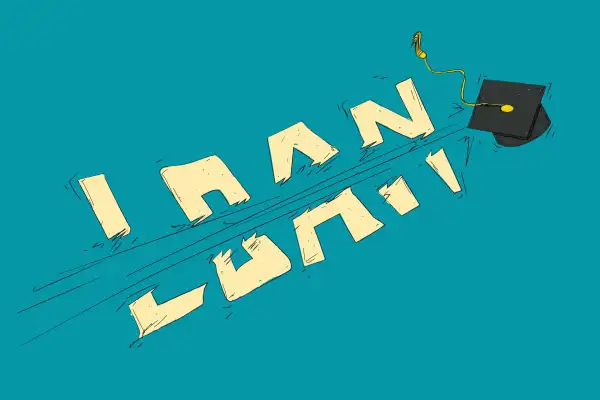How to Pay Off Student Loans Fast

Student loan debt has been linked with lower homeownership rates, stunted career growth and delayed retirement savings. So it’s little surprise that many borrowers are eager to be debt-free as quickly and efficiently as possible.
Much of what works for knocking out other debts also applies to student debt, but there are some nuances with student loans that you should learn — and use to your advantage.
Start by figuring out exactly how much you owe. Make a list of all your student loans, whether they’re federal, private or a combination of the two, and the interest rate each loan carries. Your debt with each lender will often be presented as a lump sum, say, $40,000, but unless you’ve refinanced or consolidated, that figure represents several individual loans that carry varied interest rates.
This is also the time to do some basic budgeting — that is, to figure out what you can afford to put toward your debt each month. Keep in mind that you can request a different payment due date if it will work better with your pay schedule and typical monthly spending than the date you’re currently tied to.
Now it’s time to get down to business. These eight tips will help you pay off student loans early, and save a bunch of money on interest in the process.
1. Pay more than the minimum each month
Paying more than you owe each month is the most tried-and-true way to make a significant dent in your debt. As always, any amount will help, but the bigger you can go, the better.
To get the full effect, be sure to tell your loan servicer to apply the extra to the principal balance. If not, the money could be used as prepayment on your next bill. Likewise, you’ll want to put the extra money toward the loan with the highest interest rate to get the biggest savings. Most student loan servicers make this relatively easy to do on their online portal; look for an option that allows you to custom pay or specify payment by loan.
How much can you save by making additional payments on your student debt?
Example: $40,000 loan amount, 10-year loan term, 6% interest rate, $444 monthly payment
No extra payments
$50 extra per month
$100 extra per month
$200 extra per month
Pay-off time
10 years
8 years, 9 months
7 years, 8 months
6 years, 3 months
Total payments
$53,290
$51,398
$49,987
$48,016
Total interest paid
$13,290
$11,398
$9,987
$8,016
Total savings
$0
$1,892
$3,303
$5,274
2. Focus on private student loans first
Paying off the private student loans should always be your first line of attack.
These tend to have less flexible repayment terms and fewer borrower protections than federal student loans, and most forgiveness programs don’t apply to private loans. They’re also often more expensive than federal debt.
That’s especially true if you took out a variable-interest rate loan while you were in school, says Dan Rooker, a financial planner who specializes in student debt. By the time borrowers feel financially stable and ready to focus on their student debt, those loan rates have often doubled or even tripled.
“Because it’s so out of sight, out of mind, they forget to even check their rate, and they think, ‘oh what I saw way back when is my interest rate,’” he says. In reality, they may be carrying a private loan with a 14% rate without realizing it.
3. Don’t skip interest discounts
The federal government and nearly all private lenders offer a small interest rate reduction if you enroll in automatic payments, which transfer money from your bank account directly to your lender on the same day each month.
A 0.25% rate discount is the standard for autopay, and that’s all you can get for federal loans. For private loans, though, some lenders offer additional reductions, such as a discount for opening up a checking account at the same bank.
This move has a relatively small effect — dropping an interest rate from 6% to 5.75% will save about $600 over a decade on that $40,000 debt from above — but it’s also a very easy move to make. Plus, it’ll help ensure you never make a late payment.
4. Use federal repayment plans strategically
It may sound counterintuitive, but choosing a federal repayment plan that lowers your required monthly payment can actually make it easier for you to pay off your loans faster — so long as you’re diligent about consistently paying more than the minimum due.
Here’s how: Every borrower is placed in what’s called the “standard” repayment plan when they enter repayment. It’s a 10-year plan with equal monthly payments. Before you can make extra payments, whether it be to pay off a loan with a low balance or to focus on higher-interest rate loans, you have to make that minimum payment.
Let’s go back to the $40,000 debt in the chart above. Your monthly bill on the standard repayment plan will be $444, and your loan servicer is going to take that amount and split it between all your individual loans. If you can afford to put $500 a month toward your student loan payments, that leaves just $56 for extra payments.
But if you instead enroll in an extended repayment plan that stretches out your term up to 25 years, your monthly required payment would drop to as low as $260 a month. That gives you four times as much money to make extra payments — aka “more freedom and flexibility to target the highest interest rate debt,” Rooker says.
It’s a particularly smart strategy for borrowers balancing private and federal debt. If you can get your federal payment down as low as possible through an income-driven repayment plan or the extended repayment option, you can pay down the private debt quicker.
Hot tip: Use this simulator from Federal Student Aid to map out how much you’d owe each month under different plans.
5. Research forgiveness options and loan repayment assistance programs
You’ve likely heard about Public Service Loan Forgiveness (PSLF). The federal program promises debt cancellation to borrowers who commit 10 years to working in a government or nonprofit job. The federal government also offers a separate Teacher Loan Forgiveness program, which offers up to $17,500 in forgiveness for teachers who work for five years in low-income areas.
Beyond those, there are a host of loan repayment programs, which help borrowers by subsidizing or reimbursing payments made on student loans. Your eligibility will depend on your occupation, location and sometimes, the institution you attended.
The Nurse Corps Loan Repayment Program, for example, pays 60% of participants’ student loans after they work for two years in a healthcare facility with a critical shortage of nurses. Through Columbia University’s generous loan repayment assistance program eligible public-interest lawyers can get their student loan payments on an income-driven plan covered. Most states also have at least one type of loan repayment assistance for residents, though they are most often targeted to healthcare professionals, teachers and lawyers. (Learn more about these programs, and others, in our guide to student loan forgiveness.)
Finally, student loan repayment assistance is a growing employee benefit, particularly now that employers can give up $5,250 tax-free toward student loans or offer a 401(k) match based on an employee’s debt payments. Not a benefit offered by your employer? Here’s how to ask them to adopt it.
6. Consider refinancing your debt
Student loan refinance can help some borrowers get a lower interest rate and ultimately pay less over time on their debt.
This move works best for someone who has a strong credit score, a steady job and a manageable debt-to-income ratio. If you have private loans, refinancing simply means replacing your current loan(s) with a new one. There’s no fee associated with refinancing, and you can go through the process multiple times as your financial situation improves or interest rates drop.
If you have federal loans, though, refinancing requires leaving the federal system altogether. The process can’t be reversed, and you’ll lose access to federal benefits like grace periods, deferments, forbearance and income-driven repayment. (Most private lenders offer forbearance programs and some may even offer flexible repayment plans, but they will be far narrower than what is offered by the government.)
Read more about the pros and cons in our guide on how to refinance your student loans.
7. Avoid capitalized interest
Interest is capitalized when unpaid interest is added to the loan principal. This increases your overall student debt, because you’re now accruing interest on a new, larger loan balance. With student loans, both federal and private, this typically happens when you exit a grace period or forbearance.
If you’re able, make monthly interest-only payments while you’re in school or otherwise in a period where you’re not paying. Alternatively, you can make a lump-sum payment to take care of that interest before the repayment period begins.
8. Put windfalls to work
Anytime you get an extra influx of cash — like a tax refund or a bonus at work — it’s smart to make an extra payment on your student loans.
That said, taking too draconian of an approach to your student debt can backfire. If using part of a windfall to reward yourself for sticking to your budget helps keep you moving forward, then that’s also a worthwhile way to spend it.
Paying down student loans, even when you’re trying to do it quickly, is a long game. Do what you need to keep the fire burning.
Should you pay off your student loans early?
Now that you know how to pay off your loans early, you need to take a step back and think about whether you actually should. Depending on your bigger financial picture, student debt may not be the smartest place to focus your attention (and money).
When borrowers come to Rooker looking for a payoff plan, he first asks them whether they have any credit card debt. If so, that should take priority over student loans, since credit cards carry an average interest rate over 22% — more than triple what you’ll see on many student loans. Don’t overlook any introductory credit card deals that may have a 0% offer set to expire in the coming months.
People sometimes get distracted by paying down student loans, because it’s probably one of, if not the, biggest debt they carry. “So they think, ‘Oh, the larger balance needs to be prioritized,’” Rooker says. But “it's really the interest rate that's going to hurt.”
Personal loans, which carry an average interest rate around 12%, fall in this pay-it-off-first category, too. Finally, if you don’t have any savings to tide you over in the event of a job loss or unexpected expense, like a major car repair, experts say it’s best to keep paying the minimum on your student debt and divert any extra income you have to building up a nice emergency fund.
More from Money:
How to Get Student Loan Forgiveness
Should I Refinance My Student Loans?
Everything You Need to Know About Student Loan Interest Rates

